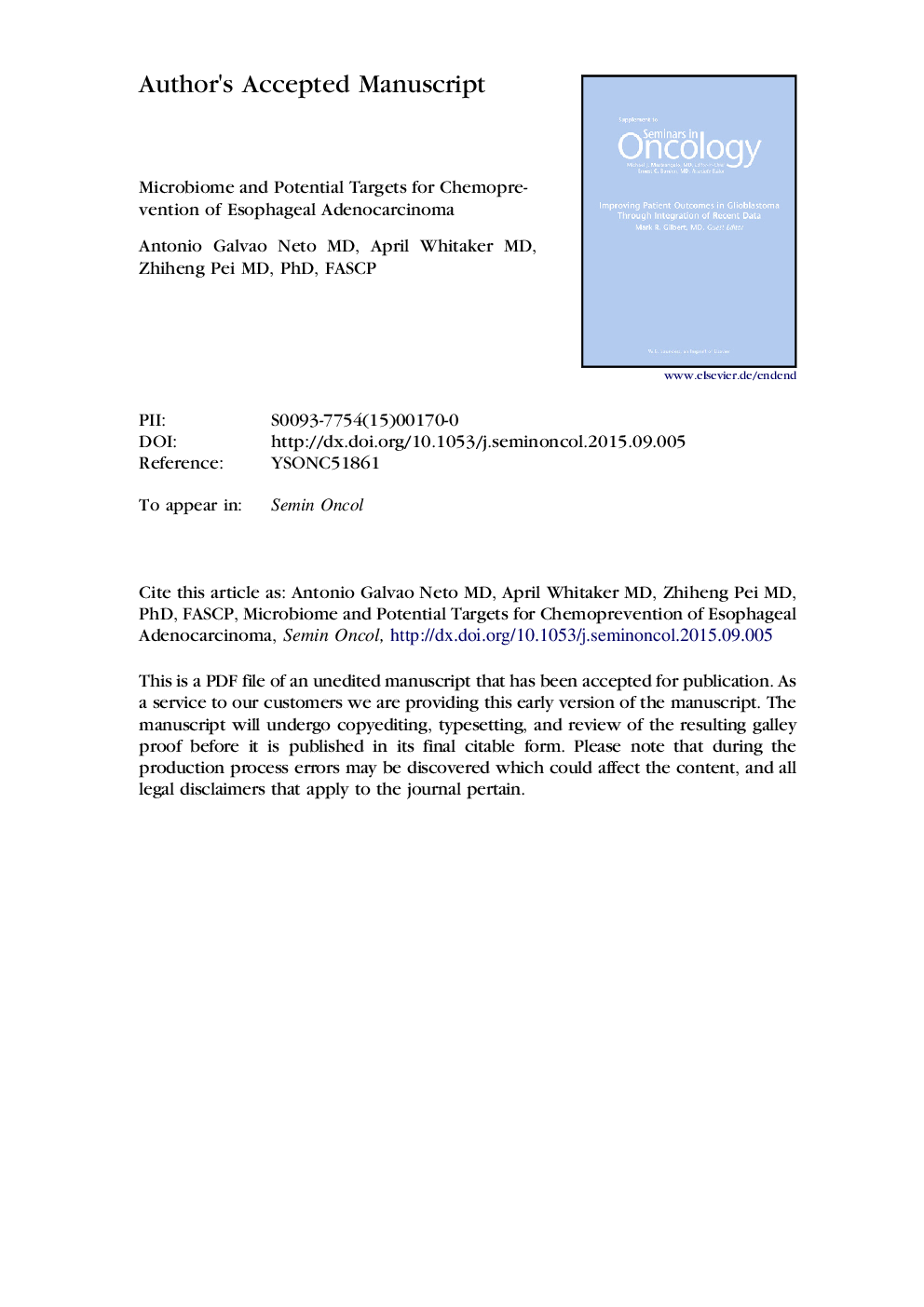| کد مقاله | کد نشریه | سال انتشار | مقاله انگلیسی | نسخه تمام متن |
|---|---|---|---|---|
| 10924295 | 1091207 | 2016 | 57 صفحه PDF | دانلود رایگان |
عنوان انگلیسی مقاله ISI
Microbiome and potential targets for chemoprevention of esophageal adenocarcinoma
ترجمه فارسی عنوان
اهداف میکروبیومی و بالقوه برای پیشگیری شیمیایی آدنوکارسینوم مری است
دانلود مقاله + سفارش ترجمه
دانلود مقاله ISI انگلیسی
رایگان برای ایرانیان
کلمات کلیدی
میکروبیوم، ایمنی فزاینده، پیشگیری شیمیایی، آدنوکارسینوما مری
موضوعات مرتبط
علوم زیستی و بیوفناوری
بیوشیمی، ژنتیک و زیست شناسی مولکولی
تحقیقات سرطان
چکیده انگلیسی
Esophageal cancer is one of the deadliest cancers, with a dismal prognosis. It is increasingly recognized that esophageal cancer is a heterogeneous disease. It can be subdivided into two distinct groups: squamous cell carcinoma and adenocarcinoma, based on histological appearance. In the Western world, the incidence of squamous cell carcinoma was considerably higher than esophageal adenocarcinoma (EA) until the 1990s when, due to a dramatic increase, the incidence of EA surpassed that of squamous cell carcinoma. EA typically follows a well-established stepwise evolution from chronic inflammation due to reflux esophagitis (RE) that progresses to metaplasia (Barrettʼs esophagus [BE]) to dysplasia, which often culminates in EA. The pathophysiology of EA is complex and involves diverse factors, including gastroesophageal reflux, gastric acid secretion, dysfunction of the antireflux barrier, gastric emptying disturbances, and abnormalities in esophageal defense mechanisms. The current understanding of the etiology of EA is mainly derived from epidemiological studies of risk factors such as cigarette smoking, obesity, gastroesophageal reflux disorders (GERD), and low fruit and vegetable consumption. Numerous studies have been done, but the factors that drive the dynamic increase in the incidence of EA remain elusive. The advent of widespread antibiotic use occurred in the 1950s, preceding the surge of EA. Based on this temporal sequence, it has been hypothesized that antibiotics alter the microbiome to which the esophagus is exposed in patients who have GERD and that chronic exposure to this abnormal microbiome (ie, changes in species diversity or abundance) accounts for the increase in EA. If changes in the proposed factors alter the stepwise progression (RE-BE-dysplasia-EA), they may represent potential targets for chemoprevention. New discoveries will help improve our understanding of the biology and pathogenesis of these cancers, and aid in finding novel therapeutic targets.
ناشر
Database: Elsevier - ScienceDirect (ساینس دایرکت)
Journal: Seminars in Oncology - Volume 43, Issue 1, February 2016, Pages 86-96
Journal: Seminars in Oncology - Volume 43, Issue 1, February 2016, Pages 86-96
نویسندگان
Antonio Galvao Neto, April Whitaker, Zhiheng Pei,
